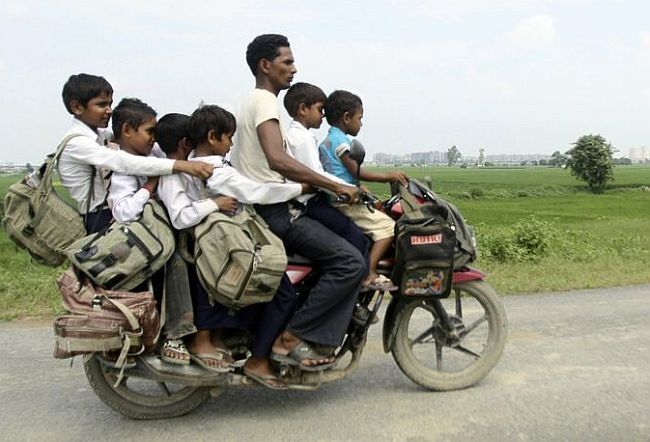'Gujaratis, among all Indians, are supposed to be born businessmen, but if more than 80% of them do not have the ability to do basic arithmetic, the future is grim.'
'The big issues are in society and they cannot be changed by an HRD minister no matter how brilliant she may be or think of herself as being,' says Aakar Patel.

India's first education minister was Abul Kalam Azad. He was a serious intellectual and one of the best read men in politics anywhere in the world. He is called maulana because of his knowledge of religion. His work simplifying the Quran is still the standard text followed by maulvis in India and Pakistan. His knowledge of history and literature was unmatched in the Congress.
In 1931, when Nehru wrote the beautiful 900 page Glimpses of World History from jail, he had no reference books to check facts and dates. But he had Azad and his encyclopaedic knowledge about everything from the history of ancient Egypt, Greece and Rome to tea in China.
As education minister in independent India, Azad founded the Sahitya Akademi. My point is saying all this is to show that many great people have held this office in the past.
Today, the education ministry has a different name. It is called the ministry of human resource development and it is headed by the actress Smriti Irani. She believes she has been doing a good job as minister though even some supporters of Narendra Modi think she is not, because they see her lacking in education and experience.
A few days ago, Irani listed some of her achievements which included the following: Over 4 lakh (400,000) school toilets made in one year; focused interventions to improve maths and science levels and focused interventions to improve reading and writing levels. She claimed many of these things were being done for the first time under her direction.
She listed many other things, including installation of statues and innovations in recording attendance and so on, but for now let us look at these.
What is the problem of education in India? The biggest one is the quality of primary education. Almost everything is going wrong here.
There are no proper facilities, teachers often do not show up, the free food served is so casually prepared that children sometimes die of food poisoning.
The government has failed to do this vital work properly, forcing even the poor to send their children to private schools.
In 2006, fewer than 20% of students were in private schools, and 10 years later it is more than 30%. Even here, the quality is variable and many private schools are worse than government schools.
The result is that a majority of students produced by our schools are not educated. The best annual survey of education in India is conducted by the organisation Pratham. It will be instructive to look at its findings for Gujarat.
In 2014, only 22% of Class 7 students in rural Gujarat could read a sentence in English. This number was 37% in 2007 and so the education standard is actually falling, even in a state which most Indians believe had good governance.
Of the Class 5 students tested, the number was 6% meaning that 94% of Gujarat's students aged 10 could not read a single sentence in English. I should add here that over 20,000 students were surveyed so the sample size is very big.
Less than half (44%) of students in Class 5 had Class 3 level reading ability in Gujarati. This number also had deteriorated over the years. Only one third (35%) of students in Class 3 had Class 1 reading ability in Gujarati and this number had deteriorated by 10% since 2007.
The data is from government schools, but even the numbers from private schools are similar. For example, 13% of Class 5 students in government schools could do division. The number for private schools was only 16%.
Gujaratis, among all Indians, are supposed to be born businessmen, but if more than 80% of them do not have the ability to do basic arithmetic, the future is grim.
Some of the blame can be put down to a lack of resource. The government of the United States spends $115,000 on the education of each American child from age 6 to 15. This means that Rs 7 lakh (Rs 700,000) is spent per child per year.
This is unimaginable in India. We will require 100 years to reach that level. But we must also accept that there are poor countries that do not have our problems.
Education in Zimbabwe, which has a per capita income lower than India's, is superior to ours. The issue is not only a lack of money.
I often write that the problems of India are only partly those of government. The big issues are in society and they cannot be changed by a minister no matter how brilliant she may be or think of herself as being.
India is producing barely literate and unemployable citizens. They will not be productive and, for no fault of their own, will not be equipped to work in the modern economy. We are failing to develop our human resource.
It is something our human resource development minister should accept with humility because it is not her fault. Even though she believes new things are being done for the first time under her, many great people have done the job she is doing today and all have failed.
Aakar Patel is Executive Director, Amnesty International India. The views expressed here are his own.
- You can read Aakar's earlier columns here.










